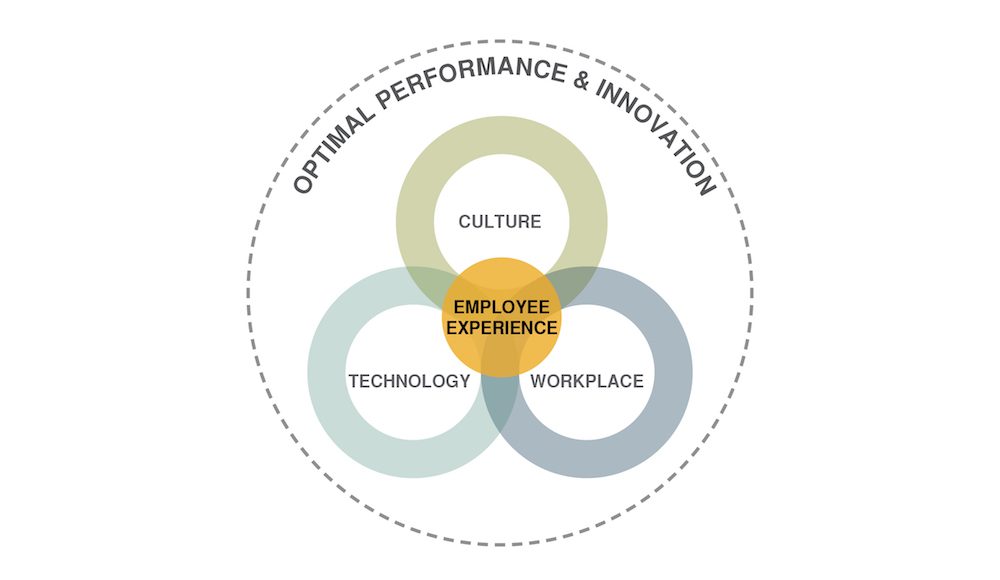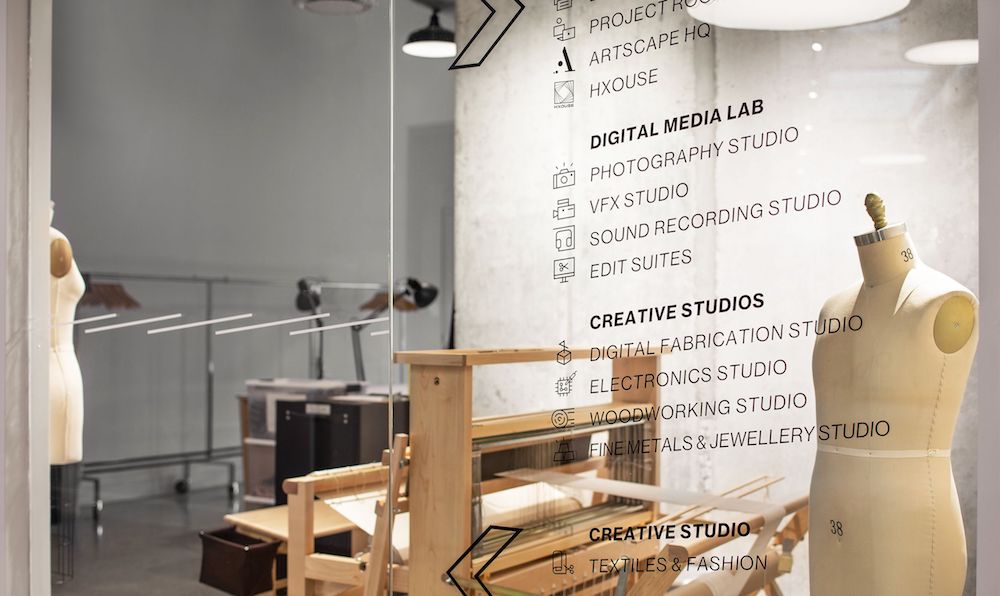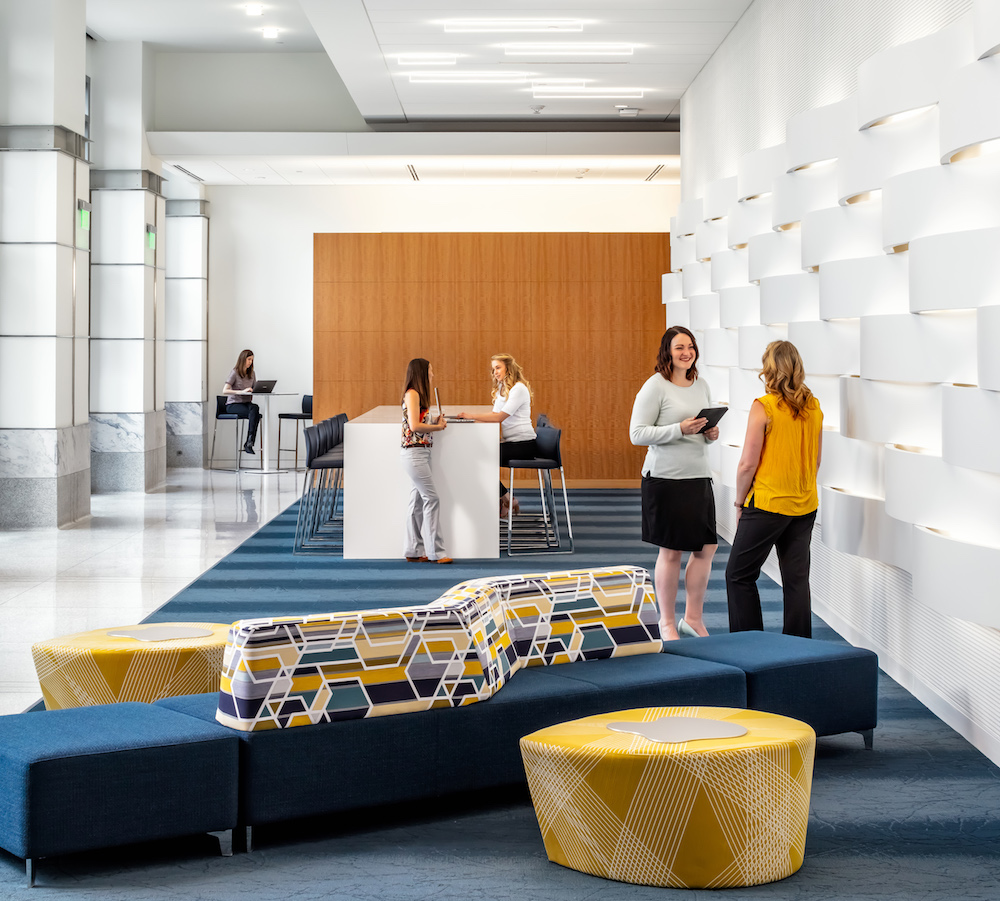Will the office remain the same as we return to work, or will we use this incredible opportunity to examine what can be different?
This article is the final piece in a series of three focused on workplace wellness. Make sure to check out part one here and part two here.
Productivity, innovation, culture, and employee experience have emerged as critical topics when developing new return to office work strategies. Employees are craving connection, community, and a strong sense of purpose within their organizations. We need to create workplaces that invite employees back to the office by meeting these needs while being safe and inclusive.
EMPLOYEE EXPERIENCE
Engagement is how engrossed employees are in their work, how enthusiastic they are about what they are doing, and how persistent they are in the face of new challenges. In the past, many have focused on employee engagement without looking at the experiences that nurture it. As we’ve learned, engagement is a direct result of experience, so organizations need to first step back and look at the workplace conditions that either promote or discourage these behaviors. As seen in the diagram below, the workplace experience is an interplay between an organization’s culture, technology, and the physical environment (Morgan, 2017). A positive employee experience happens when one’s perception of the culture, technology, and the workplace match their expectations. It is also about having choice of where and how one works, how valued one feels, and whether one has a sense of purpose and pride. When organizations provide this to their employees, they promote optimal organizational performance that fosters innovation and lends itself to culture.

Organizational culture shapes how business is conducted, how employees, managers, and leaders are expected to behave, and how social engagement is fostered. This is where relationships are cultivated, and trust is developed between co-workers and with leadership. These relationships are crucial influencers in what an employee “expects” from the culture and how they perceive it to be.
Organizational culture is derived from the following:
- Artifacts: The physical representations of the more visible markers of culture within an organization. Examples include branding, awards, furnishings, and how space is utilized.
- Espoused Beliefs & Values: What an organization believes in at its core and how it conducts business.
- Basic Underlying Assumptions: The things that are hard to communicate, they are how people are expected to behave – i.e the unwritten rules. (Edgar Schein, 2016)

PRODUCTIVITY & INNOVATION
Our culture shapes our behaviors and influences how we collaborate. Right now, we are experiencing organizational culture largely through web conferencing. More than ever before, we are using technology to connect and collaborate for our jobs – it is how we get work done. Great collaborative technology influences our employee experience and is represented in all aspects of collaboration: in-person, virtual, or a combination. This is most successful when people come together to share ideas and with a commitment to full equity in gathering whether you are together physically or virtually.

To understand how innovation is created, we need to first understand how knowledge is shared. There are two methods of knowledge sharing: explicit knowledge – individual professional knowledge, and tacit knowledge – the exchange of thoughts and ideas, which is also related to culture. Tacit knowledge is dynamic, creative, and generative, and is the foundation of innovation. When people of diverse mindsets share ideas with each other, creating actionable next steps is when innovation occurs. Diverse mindsets are critical in problem solving and collaboration because when we search out others with diverse, or even opposing thoughts, new ideas and questions emerge that spark creative thinking.

CONNECTION & COMMUNITY
The workplace is not merely a physical location, it is also a social environment. Research has shown that fostering trust and support, which occurs through social engagement, is the catalyst for employee experience. This is expressed in an IBM Smart Workforce Institute study (2016), “When employees feel that they can trust in the organization, their employee experience is on average 83 percent higher, and when they feel support from colleagues, employee experience is on average 77 percent higher. Moreover, the results of the study also showed that meaningful work, alignment with organizational core values, feedback, and recognition are associated with 80 percent more positive employee experience” (Bjorholt, 2019). Thus, a dynamic workplace creates deeper and richer experiences that can produce life-long friendships, along with product innovations and profit. It can also provide an atmosphere of support for mentoring, training, and overall well-being that allows employees to bring their whole self to work.

When we give employee culture and experience the same level of consideration, we give client satisfaction and company profits, we can find more and more ways for people to safely interact and connect in different workplace settings. By bringing the right people together to foster the right engagement, we can create diverse, dynamic, irresistible workplaces that inspire innovation. Right now, companies and organizations are determining how they will return to the office, and what that workplace experience will be. Will it be the same, or will we use this incredible opportunity to examine what can be different? The way our workplaces influence employee experience and foster innovation will constantly transform as we continue to listen to our employees and learn from each other. While this change is inevitable, the pace is up to us.
References
Allen, T. J. (2007). The organization and architecture of innovation managing the flow of technology. New York: Routlege/Taylor Francis.
Bathelt, H. (2011). Innovation, learning and knowledge creation. In A. R.-P. Pike, Handbook of Local and Regional (pp. 149-161). New York: Routledge.
Björholt, C. M. (2019). Thesis: THAT MATCH: A KEY TO A POSITIVE EMPLOYEE EXPERIENCE. Gothenburg: University of Gothenburg.
Morgan, J. (2017). Employee experience advantage: How to win the war for talent by giving. New York: John Wiley & Sons.
Yohn, D. L. (2016). Design your employee experience as thoughtfully as you design your customer experience. Harvard Business Review.
Zhao, S. (2003). Toward a Taxonomy of Copresence. Presence, 445-455.

